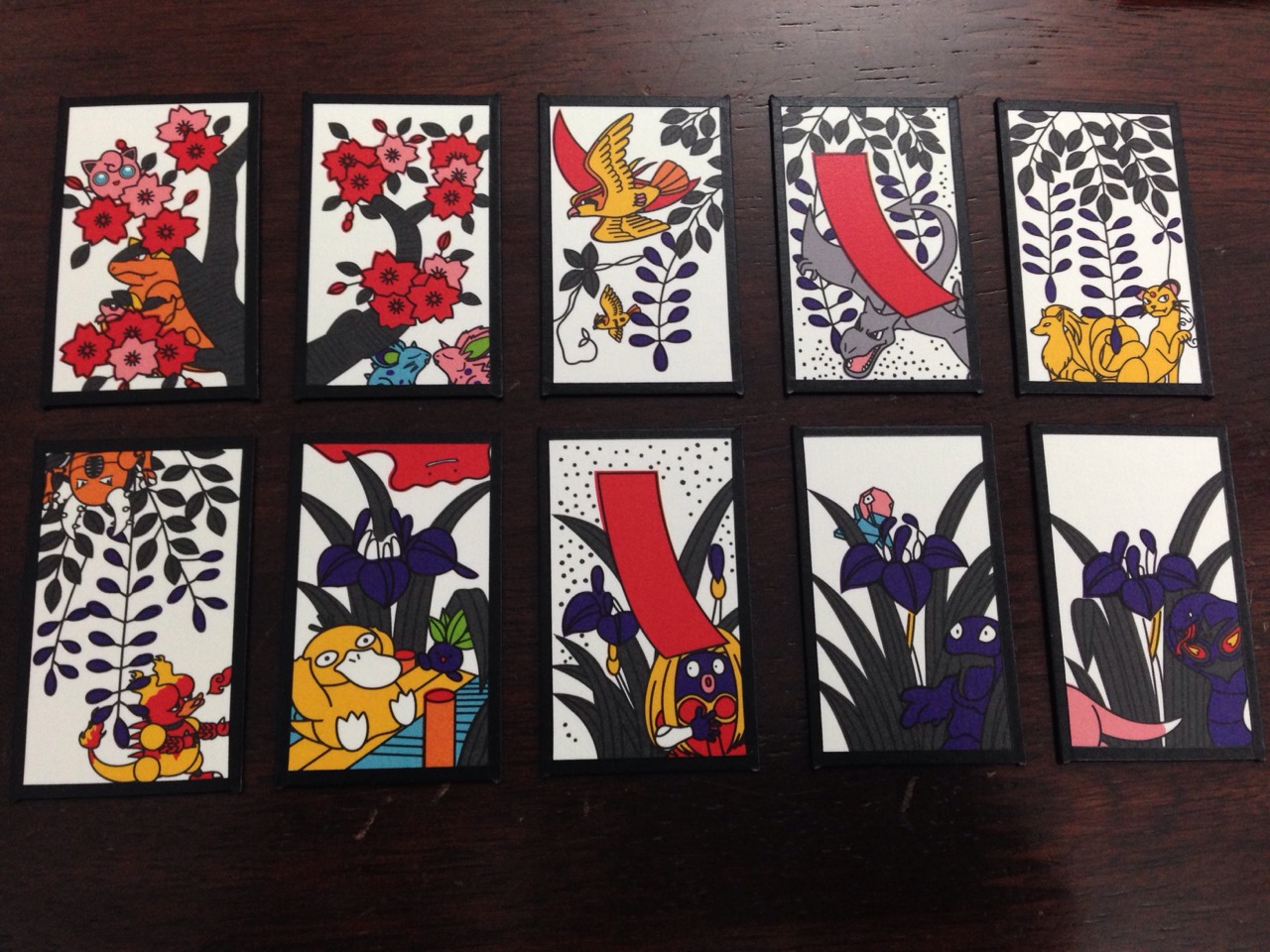Hanafuda Cards

Hanafuda Cards For Sale
Photo:mrhayata on Flickr
Did you scroll all this way to get facts about hanafuda cards? Well you're in luck, because here they come. There are 164 hanafuda cards for sale on Etsy, and they cost $22.52 on average. The most common hanafuda cards material is plastic. The most popular color? You guessed it: red. Hanafuda, (Japanese: “flower cards”), deck of 48 cards divided into 12 suits of four cards. Each suit is named for a month of the year and pictures a flower identified with that month. The cards are tiny, only 2 1/8 by 1 1/4 inches (5.4 by 3.2 cm), but about three times thicker than Western cards.
Nintendo Hanafuda Cards
New Year’s in Japan is a more subdued affair than in other parts of the world. While there are some countdown parties, it is more of a time for families to bond and to relax in each other’s company than it is a revelry. There is the making of mochi, prayers at the local shrine, and maybe a little bit of sake drinking.
For many families, the bonding and togtherness aspects of New Year’s culminate in gathering around the kotatsu, a low, heated table, watching t.v., eating, drinking, and playing games. The two most common, and perhaps most traditional games are Karuta and Hanafuda.
Karuta
At its core, Karuta is a simple search and grab game. Cards are laid out on a table face up. A question, keyword, or poem is called out. Players scan the table and race to be the first one to find and collect the appropriate card.
Hanafuda Card Months
The two most common forms of Karuta being used today are Uta Garuta (song/poem cards) and Iroha Karuta (color cards).
Uta Garuta are the more grown up of the two. These cards usually feature a few lines of a poem on the chase card and the full poem on the card to be read. These games come in several different skill levels and require a working knowledge of Japanese language and culture to play.
Special decks are also quite popular. For example, here is my copy of the game, which is localized to Tochigi Prefecture, where I live. This version of the game is called NAME (the classical name of Tochigi before the unification of Japan) and features poems, from and about the area. The artwork is likewise representative of Tochigi and makes this a fun and interesting game for locals.
Iroha Karuta, by contrast, are more like vocabulary and memory games. School children in Japan play dozens of variations as a way to practice new vocabulary and learning concepts. Toy and book stores have literally dozens of versions available at any given time covering anything and everything a kid might want to know about.
The example I have here is geared towards learning national flags around the world. Each card chase card has a flag and a country on it, each card to be read has a little information about that country. It is fun, quick, and easy to play.
Hanafuda
Hanafuda is less a game than a style of cards. These are roughly analogous to a standard set of playing cards. In fact, they were originally derived from playing cards brought to Japan by the Portuguese, right along with Karuta. However, while Karuta developed into a specific set of rules with a specific set of cards, Hanafuda evolved into a standard deck that could be adapted to several different games.
Each deck has twelve suits, one for each month, as well as a flower for each suit. Each suit consists of four cards, with different point values depending on the game.
Although not as popular as Karuta, Hanafuda decks are easy to find and in several different styles. The games played with Hanafuda cards are arguably more difficult that Karuta but Japanese language ability is not needed to play, as long as you can remember which flower represents which month!
Happy New Year!